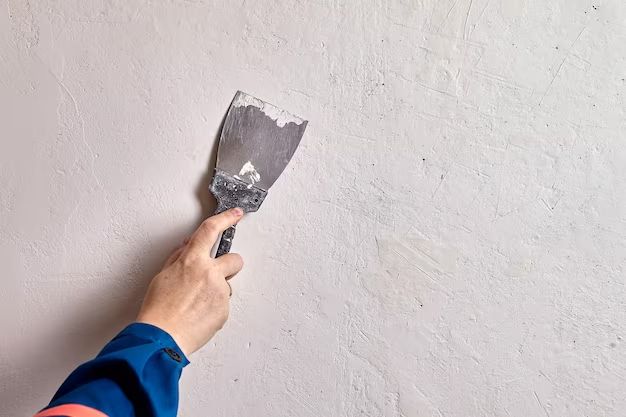Putty is often used to fill small holes and cracks in walls prior to painting. While putty can temporarily patch holes, it is not the best long-term solution for repairing holes and cracks in walls. There are some pros and cons to consider when using putty as a filler.
Page Contents
The Pros of Using Putty to Fill Holes
Here are some of the benefits of using putty as a filler:
- Putty is inexpensive and readily available. You can pick up a container of drywall putty or wood putty for just a few dollars at any hardware store.
- Putty is easy to use. Just press it into the hole with a putty knife or your fingers. No mixing or preparation is required.
- It dries fast. Most putty will dry in under an hour so you can paint over it quickly.
- Putty sands smoothly for a seamless finish. Once dry, you can easily sand putty flush with the wall surface.
- It temporarily fills the hole. If you just need a quick fix, putty will patch holes and cracks so you can paint over them.
So if you just need a temporary filler prior to painting, putty can work well to fill minor holes and cracks in drywall, wood, and plaster. The fast drying time and sandability of putty makes it easy to smooth holes flush with the surface so paint looks seamless.
The Cons of Using Putty as a Filler
While suitable for temporary repairs, there are some downsides to using putty to fill holes:
- Putty doesn’t offer a permanent fix for holes and cracks. It lacks the adhesion and strength to last long term.
- Over time, putty will shrink and dry out, leaving cracks and indentations behind.
- It is not effective for filling larger holes, gaps wider than 1/4 inch, or holes deeper than 1/4 inch. The putty will just crack and fall out.
- Excessive putty use can lead to cracking or peeling when painted over.
- Temperature changes cause putty to expand and contract, leading it to fall out of holes.
- Moisture exposure can soften putty and cause adhesion loss.
The bottom line is that while putty offers a quick fix, it does not have the strength and durability for a lasting hole repair. Using too much putty or for holes that are too large is likely to lead to future cracking, shrinking, or falling out.
Better Options for Filling Drywall Holes
For a reliable drywall hole repair that will last, it is better to use joint compound or drywall patching plaster:
- Joint compound – Also called drywall mud, joint compound offers superior adhesion and drying strength compared to putty. It goes on smoothly and sands to a seamless finish. For small holes, the lightweight pre-mixed joint compound works well. For larger repairs, use paper or fiber tape with setting-type joint compound.
- Drywall patching plaster – Specifically designed for drywall repairs, patching plaster comes as a powder you mix with water. It dries rock hard and repairs up to 1-inch holes in one application. The plaster fills holes up to 2 inches deep when used in layers. It sands smoothly for painting.
Joint compound and patching plaster form a long lasting bond with drywall that stands up to cracks and movement better than putty. They are the products recommended by drywall contractors for durable repairs.
Better Options for Filling Wood Holes
For holes in wood, wood filler and wood putty products are better choices than wall putty:
- Wood filler – Available as water-based or solvent-based, wood filler comes in different wood tones. It fills scratches, nail holes, and gouges in wood. The filler dries hard and sands smooth for staining or painting.
- Wood putty – Typically oil-based, wood putty adheres well to fill small holes in wood trim, molding, cabinets, and furniture. Let it dry completely before sanding and painting.
Wood fillers and wood putty dry harder and resist shrinking compared to drywall putty. They create durable repairs in wood surfaces.
Tips for Using Putty to Temporarily Fill Holes
While joint compound, plaster, wood filler, and wood putty make longer lasting repairs, there are times when you may want to use putty for a temporary fix. Here are some tips for success when using putty to fill small holes:
- Choose a putty designed for the surface – drywall, wood, or plaster. Match the putty to the wall or trim material for better adhesion.
- Make sure the hole has clean, dry edges so the putty adheres well.
- Avoid overfilling the hole with too much putty since it may cause cracking when dry.
- Press putty firmly into the hole with a putty knife to fill completely and reduce air pockets.
- Let putty dry completely before sanding. Drying times range from 15 minutes to 2 hours.
- Sand putty gently and smooth edges flush with the surrounding surface.
- Prime before painting for the best results. Oil-based primer adheres better to putty.
- Expect to re-apply putty after painting as drying shrinkage often causes cracks in putty.
Following these tips will maximize adhesion and create an even surface when using putty as a temporary hole patch. Just don’t expect putty repairs to last long term.
Conclusion
Putty can temporarily fill small holes in drywall, wood, and plaster prior to painting. However, for a durable long lasting repair, it is better to use patching products designed specifically for each surface – joint compound for drywall, wood filler for wood, and plaster for plaster walls and ceilings. While convenient, putty lacks the adhesion and strength to provide a permanent fix in most cases and should only be used for small temporary repairs before painting.
